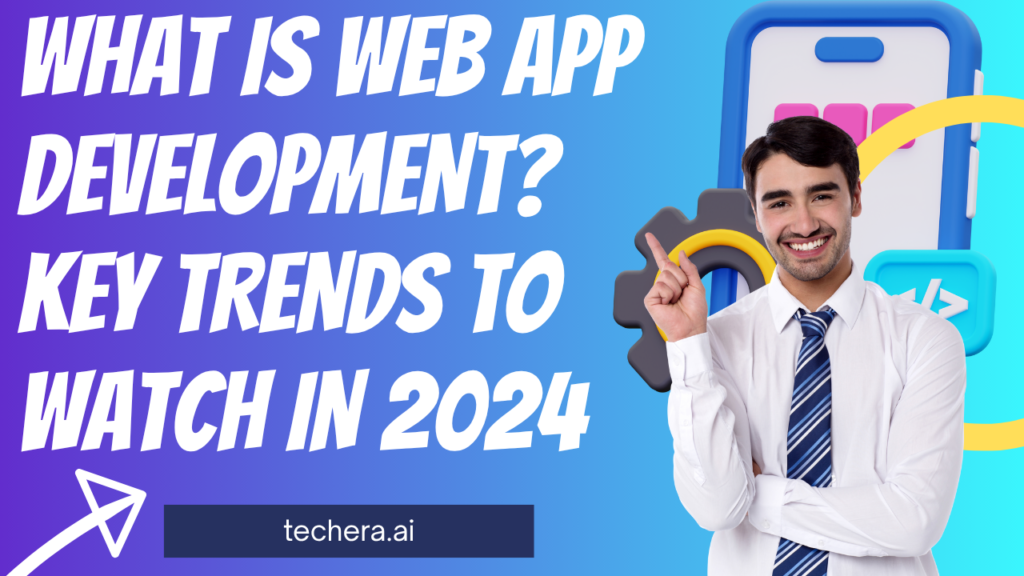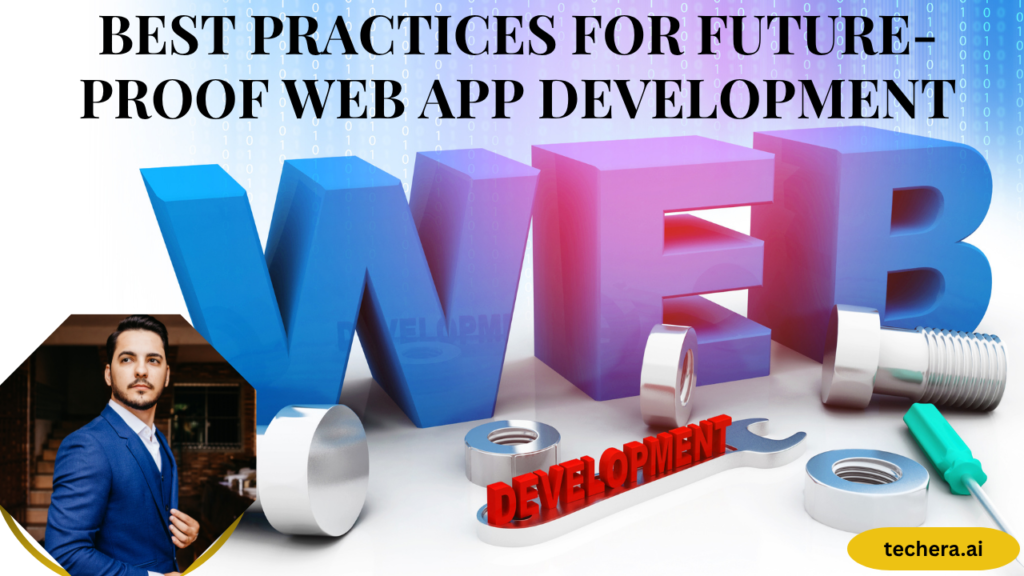
What is Web App Development? This blog post explores the fundamentals of web app development and highlights the top trends shaping the industry in 2024. From AI integration to low-code platforms, discover how modern technologies are transforming how web applications are built and used.
Introduction
Definition of Web Application Development
What is Web App Development? The process of developing applications for web browsers is known as web app development. Unlike traditional desktop software, web apps are accessed through the internet—no downloads, no installs, just open your browser and go.
Importance of Web Apps in Today’s Digital Ecosystem
Web apps are everywhere—from your online banking portal to your favorite project management tool. They simplify access, are easy to maintain, and work across devices.
The Shift from Traditional Software to Web-Based Apps
Gone are the days when you needed to install bulky software. Web apps have taken center stage, especially in the era of cloud computing and hybrid workforces.
Core Components of Web App Development

Front-End Technologies
HTML, CSS, JavaScript
These are the building blocks of any web app’s interface. HTML structures it, CSS styles it, and JavaScript makes it interactive.
Modern Frameworks (React, Angular, Vue)
Frameworks streamline development, boost performance, and make it easier to build dynamic user interfaces.
Back-End Technologies
Node.js, Django, Ruby on Rails
These are the engines powering the logic, database operations, and overall functionality of your app.
Databases and Cloud Services
SQL vs NoSQL
Choose SQL for structured data and NoSQL (like MongoDB) for flexibility and scalability.
Cloud Platforms (AWS, Azure, GCP)
Cloud platforms offer hosting, storage, and serverless computing that scale with your needs.
Why Web App Development Matters in 2024
Rising Demand for Digital Access
Users expect instant, always-on access to services—web apps make that happen.
The Need for Scalable and Cross-Platform Solutions
Web apps eliminate the need to build for different operating systems separately—build once, run everywhere.
Web Apps for Mobile-First and Remote Work Environments
In an increasingly remote world, web apps provide real-time collaboration, flexibility, and mobility.
Key Trends in Web App Development for 2024
Progressive Web Apps (PWAs) Gaining Momentum
. Without an app store, they function offline, load quickly, and have the feel of native programs.
AI and Machine Learning Integration
Think personalized dashboards, smart assistants, and automation—AI is transforming user experiences in web apps.
Also Read : What is Web App Development? Benefits for Remote Teams and Digital Collaboration
Low-Code/No-Code Development
Tools like Bubble and Webflow are empowering non-techies to build full apps, reducing development costs and speeding up launches.
WebAssembly for High-Performance Apps
WebAssembly brings near-native speed to web apps, making complex calculations and games run smoothly in browsers.
Motion UI and Microinteractions
Design is getting snappier. Subtle animations guide users, confirm actions, and make apps more engaging.
Voice Search and Conversational Interfaces
With smart speakers and voice AI booming, web apps are adapting to voice commands and chatbot integrations.
API-First Development
APIs allow your app to talk to others—think payments, maps, or CRMs. An API-first architecture guarantees seamless integration right away.
Enhanced Cybersecurity Measures
From biometric logins to advanced encryption, cybersecurity is becoming central to web app architecture.
Serverless Architecture
Build apps without managing servers. Platforms like AWS Lambda allow you to focus on code while the cloud handles the rest.
Sustainability and Green Coding
Eco-conscious coding is on the rise. Developers are optimizing code and infrastructure to reduce energy use and carbon footprints.
Industries Benefiting from Modern Web Apps
Healthcare
Telehealth, electronic records, and patient portals all run on robust web apps.
E-Commerce
From Amazon-like experiences to Shopify stores, web apps drive online shopping.
Education
Virtual classrooms, assignments, and collaboration tools thrive through web-based platforms.
SaaS and Enterprise Software
Most SaaS products today—from CRM to accounting tools—are cloud-based web apps.
Web App Development Lifecycle
Ideation and Planning
Start with user needs, features, and goals. This sets the foundation.
Design and Wireframing
Sketch interfaces, user flows, and aesthetics before writing code.
Development and Testing
Frontend, backend, APIs—get coding and squash bugs.
Deployment and Maintenance
Launch on cloud platforms, monitor performance, and keep evolving.
Choosing the Right Tech Stack for 2024
Matching Stack to Project Goals
Need real-time updates? Use Firebase. Want speed? Try Next.js with Node.
Popular Front-End and Back-End Combos
React + Node.js, Angular + Spring Boot—pick based on scalability, team skills, and performance needs.
Considerations for Security and Speed
To keep consumers safe and happy, employ HTTPS, data encryption, and fast-loading frameworks.
Challenges in Modern Web App Development
Security Risks and Data Privacy
From phishing to DDoS attacks—developers must prioritize robust security protocols.
Performance Optimization
Fast apps = happy users. Optimize images, minimize scripts, and reduce load time.
Cross-Browser Compatibility
Not all browsers behave the same—test thoroughly to ensure smooth performance across the board.
Best Practices for Future-Proof Web App Development

Mobile-First Design
Since most people are on mobile devices, start by designing for them.
Accessibility Compliance
Make sure your app is usable for everyone, including those with disabilities.
Continuous Integration/Continuous Deployment (CI/CD)
Automate testing, integration, and updates for smooth and reliable releases.
Future Outlook of Web App Development
Decentralized Applications (dApps)
Blockchain-powered apps are emerging in finance, gaming, and content sharing.
Augmented Reality (AR) in Web Browsers
From virtual try-ons to training simulations, AR is coming to your browser.
Greater Adoption of AI Assistants in Apps
Expect smart assistants baked into web apps—offering suggestions, managing tasks, or even chatting with users.
Conclusion
Web app development is more than a tech trend—it’s the future of digital interaction. In 2024, we’re seeing a shift toward smarter, faster, more inclusive, and more secure applications. With innovations like AI, PWAs, and serverless architecture, web apps are poised to revolutionize everything from e-commerce to education. Whether you’re a business owner, developer, or curious techie—keeping up with these trends isn’t optional anymore. It’s essential.
Frequently Asked Question
Q. What is the biggest trend in web app development for 2024?
A. Progressive Web Apps and AI integration are leading the charge, combining speed with intelligence.
Q. Are low-code/no-code platforms reliable for professional use?
A. Yes, many startups and small businesses now rely on these tools to launch full-featured apps quickly.
Q. How can I keep my web app secure in 2024?
A. Use HTTPS, secure authentication (like OAuth2), encrypt sensitive data, and conduct regular vulnerability audits.
Q. What makes a web app different from a mobile app?
A. Web apps run in browsers and don’t require installation, while mobile apps are downloaded from app stores and run natively.
Q. Is WebAssembly worth using?
A. If you need high performance (like for video editing, 3D rendering, or complex calculations), WebAssembly is a game-changer.

